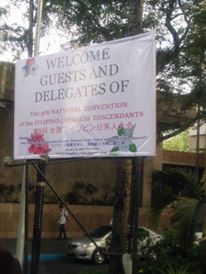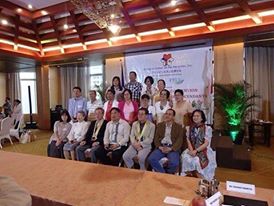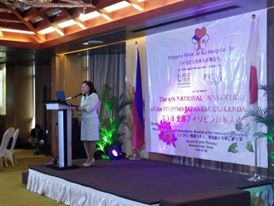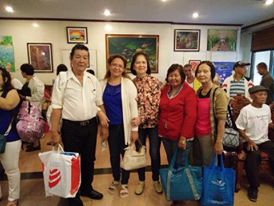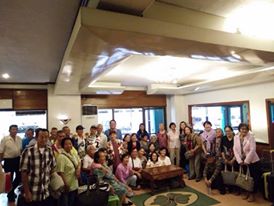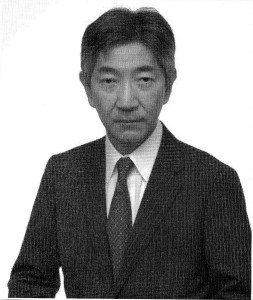It has been 12 years since Philippine Nikkei-Jin Legal Support Center (PNLSC) was establish as a non-profit organization. Dedication and commitment to our mission made us stronger and very eager to continue what we have started since our humble beginnings in 2003. Our mission is to help the war-displaced Japanese descendants in the Philippines in restoring their identity and nationality. We embarked on our Shuseki project, a legal procedure to secure the Japanese nationality of the living 2nd generation who were born from a Japanese father and Filipino mother, and had experienced the suffering caused by the war.
With the expertise of Atty. Hiroyuki Kawai and his associates, the project became a reality. At present, there are 13 attorneys who are courageously facing the hardship of filing shuseki petition and striving to give possible results to the aging 2nd generations.
The Nippon Foundation became our formidable partner for our projects. Together, we aspire to give meaning and positive impact to the lives of Nikkei-jins and their community, especially to the 2nd generations. Every year, we assist homecoming tours. Indeed, there’s a type of happiness that money cannot buy: A sight of their Father’s country, and enjoying moments of their lives while on reunion with the Japanese relative has become very priceless.
We continuously support the Philippine Nikkei-jin Kai Rengokai Inc. (formerly Federation of Nikkei-jin Kai Inc.), not only with the legal matters but in bridging the two countries, Japan and the Philippines. Year after year, we believe that we are also contributing to the development and prosperity of the Nikkei-jin communities. A livelihood program has been carried out since 2012 for establishing a self-sufficient association and training Project Administrators to become leaders that resulted in mutual learning and deeper understanding about our work.
There are achievements that paved the way to great success for our organization. One of those is the trust and support that we are gaining from both government authorities of two countries such as the Ministry of Foreign Affairs, Department of Foreign Affairs, Bureau of Immigration, and Japan-Philippine Parliamentarian Friendship League. The number of approval of the shuseki petition of the 2nd generations from the family court of Japan are likewise increasing each year.
SHUSEKI FILED APPROVED WITHDRAWN
TABLE
AT PRESENT
It’s also a clear reason that we keep on fighting the plea of the remaining 2nd generations. Their voices are now heard, nor only by the ordinary people but also by the high-ranking officials. Embracing with the idea of a signature campaign with the officers and members of Philippine Rengokai and many other supporters have been able to leave a mark. The petition papers handed to Prime Minister Shinzo Abe on July 22, 2015, raised attention to his government.
While waiting for the outcome, we continue moving forward and hastening more efforts. The searching and reaching out to Nikkei-jins all over the Philippines is in progress. The numbers of approval of shuseki petition from the family court and the locating of 1st generation’s koseki are increasing. We will never give up. Let us keep your hopes high and let us always be united.
It has been 12 years since Philippine Nikkei-Jin Legal Support Center (PNLSC) was establish as a non-profit organization. Dedication and commitment to our mission made us stronger and very eager to continue what we have started since our humble beginnings in 2003. Our mission is to help the war-displaced Japanese descendants in the Philippines in restoring their identity and nationality. We embarked on our Shuseki project, a legal procedure to secure the Japanese nationality of the living 2nd generation who were born from a Japanese father and Filipino mother, and had experience the suffering caused by the war.
With the expertise of Atty. Hiroyuki Kawai and his associates, the project became a reality. At present, there are 13 attorneys who are courageously facing the hardship of filing shuseki petition and striving to give possible results to the aging 2nd generations.
The Nippon Foundation became our formidable partner for our projects. Together, we aspire to give meaning and positive impact to the lives of Nikkei-jins and their community, especially to the 2nd generations. Every year, we assist homecoming tours. Indeed, there’s a type of happiness that money cannot buy: A sight of their Father’s country, and enjoying moments of their lives while on reunion with the Japanese relative has become heavy priceless.
We continuously support the Philippine Nikkei-jin Kai Rengokai Inc. (formerly Federation of Nikkei-jin Kai Inc.), not only with the legal matters but in bridging the two countries, Japan and the Philippines. Year after year, we believe that we are also contributing to the development and prosperity of the Nikkei-jin communities. A livelihood program has been carried out since 2012 for establishing a self-sufficient association and training Project Administrators to become leaders that resulted in mutual learning and deeper understanding about our work.
There are achievements that paved the way to great success for our organization. One of those is the trust and support that we are gaining from both government authorities of two countries such as the Ministry of Foreign Affairs, Department of Foreign Affairs, Bureau of Immigration, and Japan-Philippine Parliamentarian Friendship League. The number of approval of the shuseki petition of the 2nd generations from the family court of Japan are likewise increasing each year.
SHUSEKI FILED APPROVED WITHDRAWN
TABLE
AT PRESENT 24 37 2
OVERALL 228 168 23
(2003-2014)
ONGOING 14
LOCATED 680
It’s also a clear reason that we keep on fighting the plea of the remaining 2nd generations. Their voices are now heard, nor only by the ordinary people but also by the high-ranking officials. Embracing with the idea of a signature campaign with the officers and members of Philippine Rengokai and many other supporters have been able to leave a mark. The petition papers handed to Prime Minister Shinzo Abe on July 22, 2015, raised attention to his government.
While waiting for the outcome, we continue moving forward and hastening more efforts. The searching and reaching out to Nikkei-jins all over the Philippines is in progress. The numbers of approval of shuseki petition from the family court and the locating of 1st generation’s koseki are increasing. We will never give up. Let us keep your hopes high and let us always be united.

